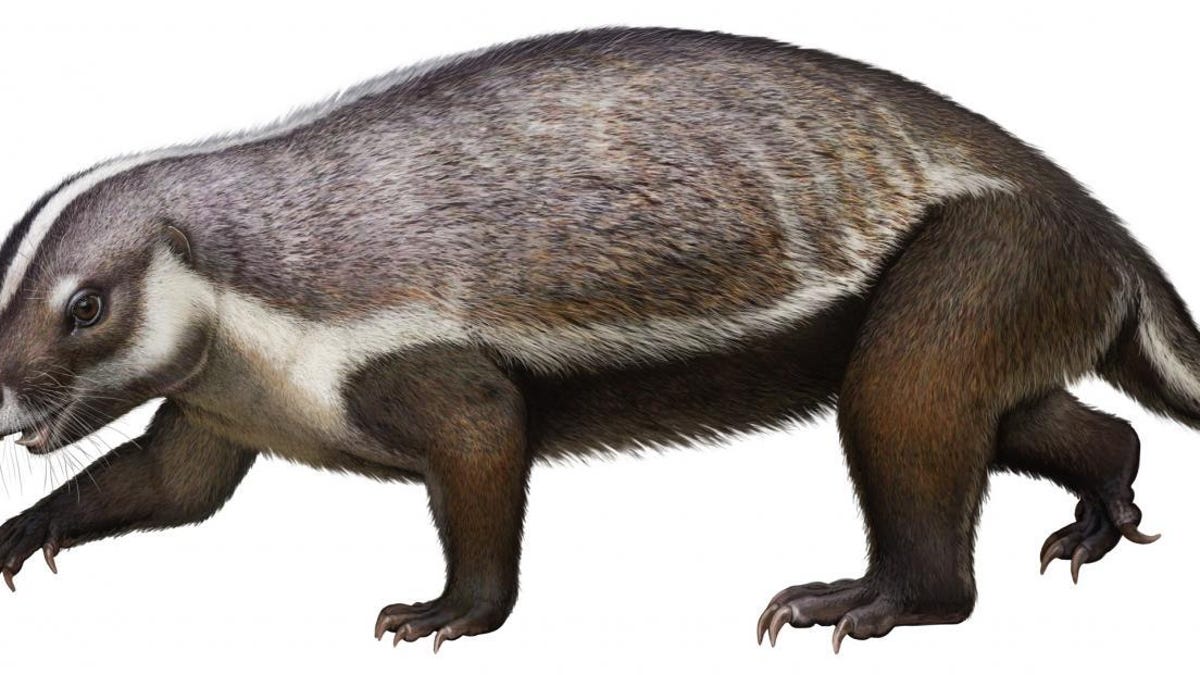This 'crazy beast' that lived with the dinosaurs was unlike other creatures
The unusual 66-million-year-old mammal called Adalatherium "bends and even breaks a lot of rules," researchers say.

Scientists say they're baffled by the strange appearance of a 66-million-year-old opossum-sized mammal dubbed the Adalatherium -- which translates as "crazy beast."
"Knowing what we know about the skeletal anatomy of all living and extinct mammals, it is difficult to imagine that a mammal like Adalatherium could have evolved," David Krause, of the Denver Museum of Nature and Science, said in a release. "It bends and even breaks a lot of rules."
On Friday, Krause, along with the New York Institute of Technology's Simone Hoffmann and their team, published a 234-page study of a fossilized skeleton of Adalatherium unearthed in 1999. They first announced the results of 20 years of research in April, in the magazine Nature. Today's in-depth paper appears in the Society of Vertebrate Paleontology Memoir Series, an annual publication that takes deep-dive looks at the most important vertebrate fossils.
The researchers describe the creature as having had muscular hind limbs like a crocodile's, powerful front legs, rabbitlike front teeth and odd back teeth that look completely unlike those of any other known mammal. It also had an unusual space between the bones at the top of its snout and more trunk vertebrae than most other mammals.
The Adalatherium was a "giant" relative to mouse-sized mammals that lived alongside dinosaurs during the Cretaceous period (145.5 million years to 66 million years ago). It lived in Madagascar and belongs to an extinct group of mammals called gondwanatherians, first discovered in the 1980s.
The ancient animal's bizarre appearance has scientists scratching their heads. Its muscular legs and big claws on the back feet imply that it was a powerful digger, but its front legs were less brawny, which could mean the creature was a fast runner.
A closer look at an Adalatherium skeleton.
Its forelimbs were tucked underneath the body like those of most mammals, but its hind limbs were more sprawling, like those of a lizard. Then there are those teeth, which suggest an herbivore but remain bizarre. And scientists have yet to figure out the purpose of the hole in the top of the snout.
"Adalatherium is simply odd," Hoffmann said in the release. "Trying to figure out how it moved, for instance, was challenging because its front end is telling us a completely different story than its back end."
Such narrative nuttiness aside, however, this "crazy beast" could help scientists eventually tell a clearer story of how mammals, or at least some of them, developed.
"Adalatherium is an important piece in a very large puzzle on early mammalian evolution in the southern hemisphere," said Hoffmann, "one in which most of the other pieces are still missing."

